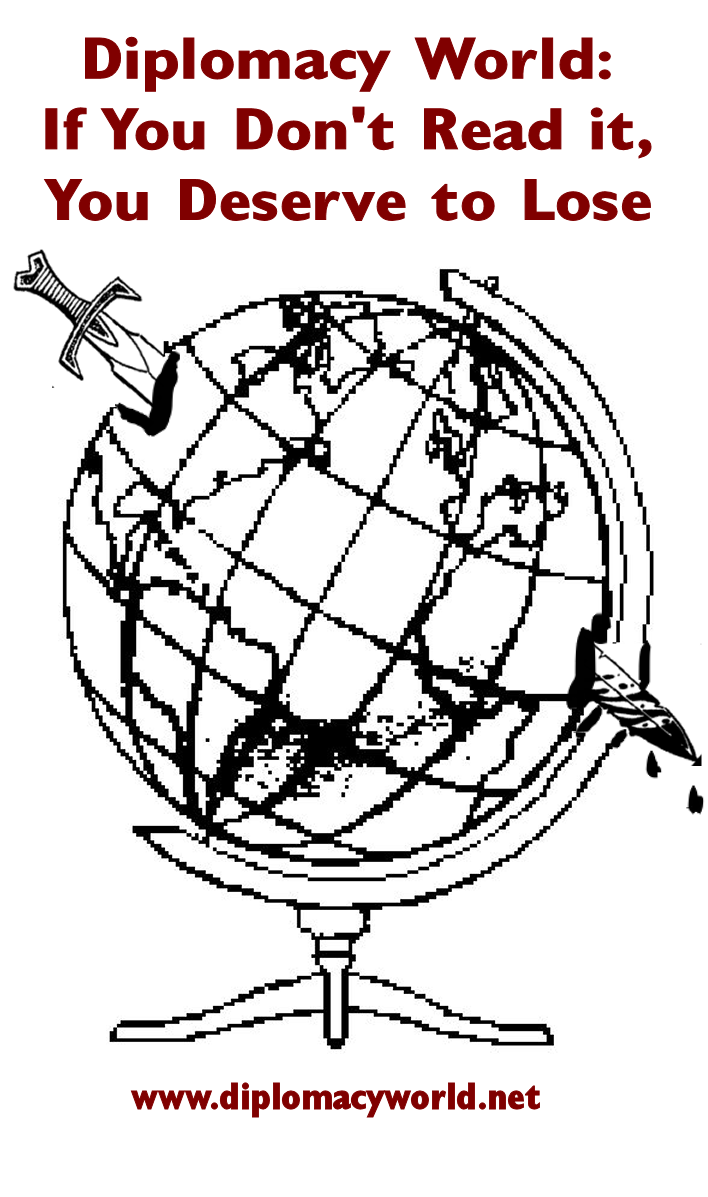




I have always been entranced by Allan Calhamer’s oh-so-simple system for combat used in Diplomacy: 2 beats 1, 3 beats 2, and so on, and no dice (I was driven to investigate Dip in the late 1970’s after one too many games of Afrika Korps when the entire Axis army was eliminated by rolling a ‘5’ outside of Tobruk). And the game itself, Diplomacy, remains the best way to experience Calhamer’s concept.
But Dip is not the most practical of games: seven people and at least that many hours, usually. So after a while, I became very interested in variants that cut down on time and players.
Fred Davis – to whom anyone who plays Dip variants should genuflect towards daily for his efforts in promoting variants – had, in the waning years of the Reagan Administration, revived Charlie Reinsel’s Balkan Wars, set in 1910 or so – i.e., just before the two Balkan Wars of 1912-1913 -- in that most quarrelsome of Europe’s peninsulas. It required seven players – for Albania, Bulgaria, Greece, Italy, Rumania, Serbia and Turkey – and thus did not cut down the number of people needed, but it was a much shorter game and one that seemed too often end in Calhamer’s ideal: a “rulebook” win.
Reinsel’s Balkan Wars I and II had no neutral supply centers and very few if any (I honestly don’t remember) open spaces. Davis’ Balkan Wars III and IV added some neutral centers and open spaces.
IV was a fun game I enjoyed several times, but it seemed to me that it was not balanced: Italy always seemed to dominate. This was because, in all the versions I through IV, Italy had an entire edge of the map – the western – to itself, thus was invulnerable to flank attacks (imagine Russia in the regular Dip game with no Turkey and it’s comparable).
So I decided to try my hand at designing a more balanced Balkan Wars. I fooled around with introducing “French North Africa” to flank Italy but, then, who would flank the French? Ditto the idea of introducing Austria-Hungary, which, by any standard, was more of a Balkan power than Italy ever was.
Somehow I hit on the idea of eliminating Italy entirely. This would shrink the number of players needed – not a bad idea by itself. It would open up the board with vast amounts of empty space at the west side of the map with two neutral centers (Trieste and Malta). And it was historical, as Italy took no part in either the First Balkan War – Serbia, Bulgaria, Rumania, and Greece against Turkey – or the Second – Albania, Serbia, Rumania, Greece and Turkey against Bulgaria.
Once I eliminated Italy I didn’t make many other changes to IV and we had Balkan Wars V. That was better balanced than IV, but still had problems: instead of one power being too strong, one was patently too weak: Bulgaria was getting mauled. Albania had its problems too. I also wanted more of a naval game.
So I gave Bulgaria an extra dot. I added neutral supply centers for Greece and Turkey to go after that weren’t Bulgarian. I made Albania’s setup all choice – it could be 3 armies, 3 fleets, any mixture – which would, depending on alliances, allow it to pair with landlocked Serbia or the necessarily nautical Greece. Greece, Turkey and Rumania didn’t need much tinkering and Serbia couldn’t take any, being landlocked, but I allowed her to build in a non-SC coastal province (Croatia) which allows Serbia to be seafaring without a center. Since countries could build in any SC they owned, not just home dots, stalemate lines and the like were negated.
Also, to make the opening turn’s diplomacy crucial, I stipulated that the choice builds (three of six powers have them, Greece, Albania and Bulgaria) not be known until the Spring 1910 opening moves were read – allowing for all kinds of initial chicanery and devastating early moves for the daring.
The result is version VI, which, since its introduction in 1991, has become the standard for Balkan Wars. It’s not perfect, but it is fast-moving and ever-changing. Alliances can shift every turn, and countries can go from one unit to a win (I once saw a Greek win with 1 home Greek SC owned). Because it’s fast – no seasons are ever separated and there should be a result by 1918 – multiple games can be played in one session, meaning a quickly-eliminated player doesn’t have to sit for hours while others have fun.
I especially like the uncertainty generated by the “blitzkrieg” start – imagine the surprise for Serbia, say, when Albania, after promising to build three fleets, builds three armies and waltzes into all three Serbian home dots in Spring 1910! Face-to-face games of Balkan Wars VI can be, um, vituperative in the extreme (making it a delightful choice for voyeuristic GMs at tournaments).
Serbia and Bulgaria are the most challenging countries to play – Rumania is the easiest, I think. I like to play Greece, which has the most options open to it. But wins can and have come with any power.
It is gratifying to see this old friend of mine get brought back to attention – I do believe it a worthy test of even the best Dippers. And if you want to play against the designer, check out Douglas Kent’s subzine “Eternal Sunshine” in The Abyssinian Prince, where I am signed up. I look forward to the challenge of taking this quick, nasty little variant up again.
Brad Wilson, a largely-retired old-timer from a hobby long, long ago, is now hiding out in Philadelphia. He can be reached, and welcomes queries, at bwdolphin146 of yahoo.com.